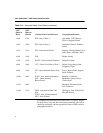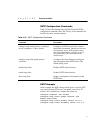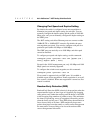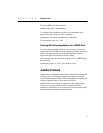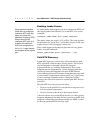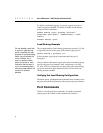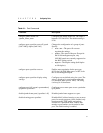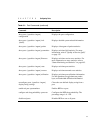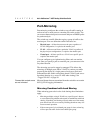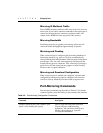
84
C H A P T E R 6 Intel
®
NetStructure™ 480T Routing Switch User Guide
want IP fragmentation only within a VLAN. This is for inter-VLAN
IP fragmentation only. For intra-VLAN IP fragmentation, all ports
in the VLAN must be configured for jumbo frame support.
Load Sharing
Load sharing (also called link aggregation) using 480T routing
switches allows you to increase bandwidth and resilience between
switches by using a group of ports to carry traffic in parallel
between switches. The sharing algorithm allows the routing switch
to use multiple ports as a single logical port. For example, VLANs
see the load-sharing group as a single logical port. Most load-
sharing algorithms also guarantee packet sequencing between
clients.
If a port in a round-robin load share group is removed, the traffic
that was being transmitted on that link is distributed on only one of
the other active load share links in the round-robin group. The
traffic is not distributed evenly between the remaining ports.
If a port in a load-sharing group fails, traffic is redistributed to the
remaining ports in the load-sharing group. If the failed port becomes
active again, traffic is redistributed to include that port.
Load sharing must be
enabled on both ends of
the link, or a network loop
will result.
This feature is supported between 480T routing switches only, but
may be compatible with third-party trunking or sharing algorithms.
Check with your Intel Customer Service Representative (see "Intel
Customer Support" on page 461).
Load Sharing Algorithms
Load-sharing algorithms allow you to select the distribution
technique used by the load-sharing group to determine the output
port selection. Algorithm selection is not intended for use in
predictive traffic engineering.



